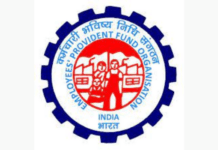The recommendation suggests outsourcing non-core functions and bringing down future hiring plans at the regional rural banks by at least 10–12 per cent.
The Government of India has asked the regional rural banks to follow the guidelines recommended by the SK Mitra Committee on HR policy for RRBs (Regional Rural Banks), in 2012.
The recommendation suggests that the future hiring plans at the regional rural banks have to be reduced by at least 10–12 per cent. The committee has also recommended the regional rural banks to outsource non-core functions, such as IT maintenance, cash remittance and housekeeping. The current staff strength of RRBs is around 80,000.
The nation’s banking system has 56 RRBs with 19400 branches and a collective business volume of Rs 4.50 lakh crore. The system lends primarily to small farmers and artisans.

However, the All India Regional Rural Bank Officers’ Federation (AIRRBOF) has reacted strongly to this recommendation.
“Staffing pattern at the head office is inadequate. In regional rural bank categories I and II, there are six functional departments. The new guidelines have proposed only one scale I officer for the entire head office. However, we feel that there should be at least one scale I officer for each department,” SK Bhattacharya, general secretary, AIRRBOF tells HR Katha.
“Recruitment of additional staff strength up to 2.5 per cent of total staff strength is inadequate considering the recent attrition of staff. It would affect customer service and business too,” says Bhattacharya.
Besides, the SK Mitra Committee has recommended that one officer will inspect around 35 branches. Bhattacharya feels that it will be a difficult task considering the large spread of geographical area and the long distances between rural branches. “This implies that one officer gets only 4–5 man days to inspect a branch,” he says.
As recommended, all staff-related matters will be shifted from the regional offices to the head office. According to AIRRBOF, this will create staff problems particularly in the management of relieving arrangements and deputation of staff. Currently, regional rural banks are spread in the radius of 1000 to 1500 km. The numbers of RRBs have come down drastically by almost 1/4th in the last few years. There are certain rural banks which service as many as 15 districts in Uttar Pradesh alone. Similarly, there are instances where a rural bank headquartered in Nagpur, Maharashtra, manages branches up to Ratnagiri, close to the Goa border.
A criterion for regional office is 60–65 branches, which is on the higher side. Many RRBs will have to reduce the existing regional offices, which will not be feasible or manageable. It will be difficult for regional managers to monitor 65 branches spread over 300 km.
Regarding outsourcing of non-core functions, Bhattacharya says, “Frequent changes would affect smooth functioning and customer service. The resources may leave their jobs after some time in the absence of security and job confirmation or be drawn towards higher salaries in other fields.”
Value our content... contribute towards our growth. Even a small contribution a month would be of great help for us.
Since eight years, we have been serving the industry through daily news and stories. Our content is free for all and we plan to keep it that way.
Support HRKatha. Pay Here (All it takes is a minute)




































